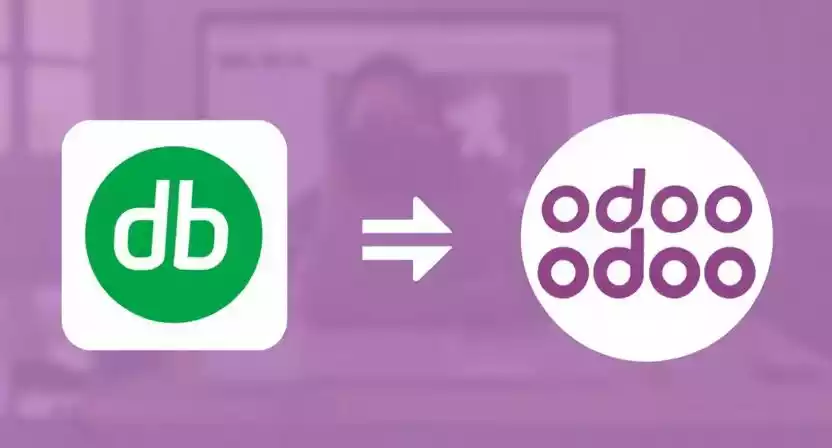For many growing businesses, QuickBooks serves as a reliable starting point for managing finances. Its user-friendly interface and basic accounting features are often sufficient in the early stages. However, as your operations expand, the limitations of QuickBooks can become increasingly apparent. You might find yourself wrestling with disconnected systems, struggling for deeper insights, or yearning for integrated workflows across different departments. This is where Odoo emerges as a powerful and scalable alternative, offering a comprehensive suite of business management applications under one unified platform.
Migrating from QuickBooks to Odoo is a significant step, but the long-term benefits of a streamlined, integrated system can be transformative. This deep dive will explore the intricacies of this migration process, highlighting key considerations, the detailed migration process, potential challenges, and best practices to ensure a smooth and successful transition.
Understanding the “Why”: Recognizing the Need for Migration
Before embarking on the migration journey, it’s crucial to clearly articulate the reasons driving this decision. Understanding your pain points with QuickBooks will help define your objectives for Odoo and guide the migration strategy. Common reasons for switching include:
- Limited Functionality: QuickBooks primarily focuses on accounting. As businesses grow, they often require CRM, inventory management, manufacturing, project management, and e-commerce capabilities. Odoo offers these functionalities and many more, all seamlessly integrated.
- Lack of Integration: Connecting QuickBooks with other business applications often involves cumbersome manual processes or unreliable third-party integrations. Odoo’s unified nature eliminates these integration headaches.
- Scalability Issues: QuickBooks can struggle to handle large volumes of data and complex organizational structures as a business expands. Odoo’s robust architecture is designed for scalability.
- Reporting Limitations: Generating comprehensive and customized reports in QuickBooks can be challenging. Odoo offers powerful reporting and analytics tools, providing deeper insights into business performance.
- Workflow Inefficiencies: Disparate systems lead to fragmented workflows and data silos. Odoo’s integrated modules streamline processes and improve collaboration across departments.
- High Integration Costs: The cumulative cost of integrating various add-ons with QuickBooks can eventually outweigh the investment in a comprehensive platform like Odoo.
Mapping the Terrain: Planning Your Odoo Migration Strategy
A well-defined migration plan is paramount to minimizing disruptions and ensuring a successful transition. This involves several key steps:
- Data Audit and Cleansing: Begin by thoroughly reviewing your QuickBooks data. Identify inconsistencies, errors, and outdated information. Cleansing your data before migration will ensure a clean and accurate transfer to Odoo. This includes verifying customer and vendor details, inventory records, and historical transactions.
- Defining Odoo Requirements: Clearly outline your specific needs and how you intend to utilize Odoo’s various modules. This involves identifying the core functionalities you require initially and potential future expansions. Engage with stakeholders from different departments to gather their requirements.
- Choosing Your Odoo Deployment: Odoo offers different deployment options: Odoo Online (SaaS), Odoo.sh (cloud platform for developers), and Odoo Enterprise (on-premise or private cloud). Evaluate the pros and cons of each based on your technical capabilities, budget, and data security requirements.
- Selecting Your Migration Method: Several approaches can be taken for data migration:
- Manual Migration: Suitable for businesses with a small amount of data. Involves manually exporting data from QuickBooks and importing it into Odoo using CSV or Excel files. This is time-consuming and prone to errors.
- Automated Migration Tools: Specialized tools and scripts can automate the data transfer process, significantly reducing time and errors. Odoo partners often have expertise in using these tools.
- Custom Development: For complex data structures or specific requirements, custom scripts can be developed to extract, transform, and load data into Odoo.
- Phased Rollout vs. Big Bang: Decide on your implementation approach. A phased rollout involves implementing Odoo modules gradually, allowing users to adapt progressively. A big bang approach involves migrating all data and going live with all modules simultaneously, which is riskier but can be faster.
- Timeline and Budget: Establish a realistic timeline for the entire migration process, including data cleansing, Odoo configuration, data migration, testing, and training. Define a clear budget, considering software costs, implementation services, and potential downtime.
- Team Involvement and Training: Identify the key personnel who will be involved in the migration process. Plan for comprehensive training on Odoo for all relevant users to ensure they can effectively utilize the new system.
The Migration Process: A Step-by-Step Guide
This section outlines the typical steps involved in the QuickBooks to Odoo migration process:
- Data Export from QuickBooks:
- Identify the specific data you need to migrate (e.g., customer lists, vendor lists, product catalogs, chart of accounts, invoices, bills, payment records, inventory levels, historical transactions).
- Utilize QuickBooks’ built-in export functionalities to export this data into common formats like CSV (Comma Separated Values) or Excel files. The exact steps will vary depending on your QuickBooks version.
- Be meticulous in selecting all necessary fields for each data type.
- For complex data or large volumes, consider exploring third-party QuickBooks data extraction tools that might offer more advanced options.
- Data Transformation and Mapping:
- Once the data is exported, you’ll need to transform it to match Odoo’s data structure and field requirements. This is a critical step to ensure data integrity.
- Mapping Fields: Create a detailed mapping document that clearly outlines how each field in your QuickBooks export file corresponds to a field in Odoo. For example, “Customer Name” in QuickBooks might map directly to “Name” in Odoo’s Partner (customer/vendor) model.
- Data Formatting: Ensure the data formats are compatible with Odoo (e.g., date formats, currency symbols, numerical separators). You might need to manipulate the exported data using spreadsheet software or scripting tools.
- Data Cleansing (Continued): This is another opportunity to identify and correct any remaining inconsistencies or errors in the exported data before importing it into Odoo.
- Odoo Environment Preparation:
- Set up your Odoo environment based on your chosen deployment option. This involves creating your Odoo instance and installing the necessary modules (e.g., Accounting, Sales, Inventory).
- Configure the basic settings of your Odoo instance, such as company information, currency, and default languages.
- Create user accounts for your team and assign appropriate access rights.
- Data Import into Odoo:
- Odoo provides tools for importing data from CSV or Excel files. Navigate to the relevant module in Odoo (e.g., Contacts for customers/vendors, Inventory for products) and look for the “Import” option.
- Carefully follow the Odoo import wizard, ensuring you correctly map the columns in your CSV/Excel file to the corresponding fields in Odoo.
- Odoo will often provide previews of the data to help you verify the mapping.
- Import data in a logical order. For example, import your chart of accounts before importing transactions, and import customers/vendors before importing invoices.
- For larger datasets or more complex data structures, consider using Odoo’s API (Application Programming Interface) or engaging an Odoo partner for more robust import solutions.
- Data Validation and Reconciliation:
- After importing the data, meticulously validate its accuracy and completeness in Odoo.
- Reconcile Balances: Compare key financial balances (e.g., accounts receivable, accounts payable, bank balances) in Odoo with your final balances in QuickBooks to ensure they match.
- Review Records: Sample a selection of customer, vendor, product, and transaction records to verify the data has been migrated correctly.
- Run Reports: Generate reports in Odoo and compare them with similar reports from QuickBooks to identify any discrepancies.
- Testing and User Acceptance Testing (UAT):
- Once you are confident in the migrated data, conduct thorough testing of all relevant business processes in Odoo using the migrated data.
- Involve end-users from different departments in User Acceptance Testing (UAT). This allows them to test the system in real-world scenarios and provide feedback.
- Document any issues or bugs identified during testing and work to resolve them.
- Go-Live and Post-Go-Live Support:
- Plan your go-live date carefully, considering potential downtime and the availability of support resources.
- Communicate the go-live plan to your team.
- Have a support team (internal or external) readily available to address any issues that arise immediately after going live.
- Monitor the system closely in the initial days and weeks after go-live.
- Ongoing Optimization and Training:
- After the initial transition, continue to optimize your Odoo implementation based on user feedback and evolving business needs.
- Provide ongoing training and support to your team to ensure they are comfortable and proficient in using Odoo.
- Explore additional Odoo features and modules that can further enhance your business operations.
Navigating the Obstacles: Addressing Potential Challenges
The migration from QuickBooks to Odoo is not without its potential challenges. Being aware of these beforehand can help you mitigate risks:
- Data Inconsistencies: Discrepancies in data formats, field mappings, and data integrity between QuickBooks and Odoo can lead to errors during migration. Thorough data cleansing is crucial.
- Data Loss: Improper migration procedures can result in data loss. Implementing robust backup strategies and meticulous data validation is essential.
- Downtime: The transition period can involve some downtime. Careful planning and communication can minimize disruptions to business operations.
- User Adoption: Resistance to change and the learning curve associated with a new system can hinder user adoption. Comprehensive training and ongoing support are vital.
- Customization Complexity: While Odoo is highly customizable, complex customizations can increase the migration timeline and cost. Prioritize essential customizations and consider phased implementation for less critical ones.
- Integration with Existing Systems: If you have other business applications that need to integrate with Odoo, ensure compatibility and plan for seamless data exchange.
- Choosing the Right Implementation Partner: Selecting an experienced and reliable Odoo implementation partner is critical for complex migrations. They can provide expertise, guidance, and technical support throughout the process.
Setting Sail: Executing the Migration and Beyond
Once the planning phase is complete, the execution involves the detailed process outlined above.
Charting the Course for Long-Term Success
Migrating from QuickBooks to Odoo is an investment in your business’s future. By carefully planning, understanding the detailed migration process, addressing potential challenges proactively, and ensuring thorough execution and ongoing support, you can navigate this transition smoothly and unlock the full potential of Odoo’s integrated platform. The result will be streamlined operations, improved efficiency, deeper insights, and a scalable foundation for continued growth. Embrace the journey, and watch your business thrive with Odoo.



